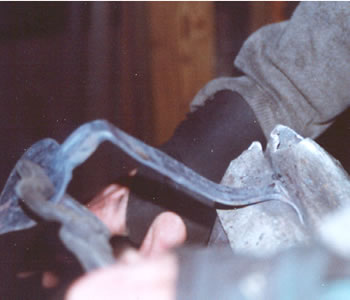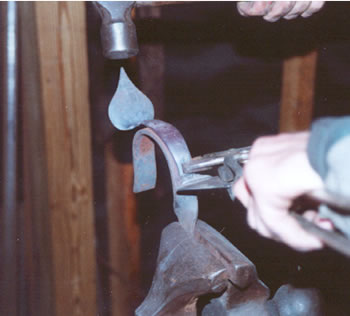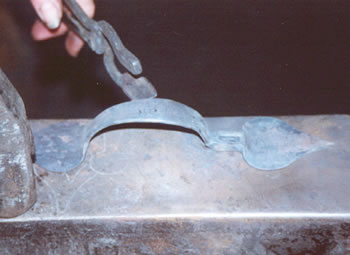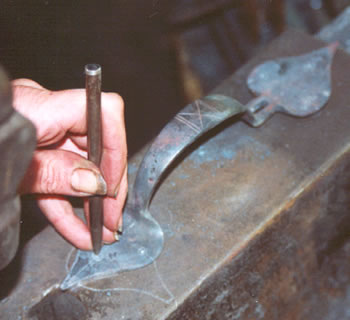 |
|
|||
| First | Previous | Next | Last | Introduction |
Shaping the latch grip
After the latch is filed, both grip ends are heated and bent in the vise using a hammer. The stock is then heated overall and shaped over a jig to create the latch grip. Finally the cusps and latch are straightened on the anvil, holes are punched and the final straightening and flattening of the cusps takes place.
Heat 29
The latch grip is first bent hot just below the slot. The aluminum jaws help to keep the stock from slipping in the vise.

Heat 30
The bottom cusp is bent the same way, hot in the vise, using the hammer to upset the grip into the cusp.

Heat 31
The grip of the latch is heated evenly, taken out of the fire and held onto this jig by a pair of vise-grips and tongs. A hammer bends the stock to its final form.

Straightening the latch
It takes several heats to straighten the cusps and flatten them.

Marking for holes
The position of the screw holes on the cusps is drawn using a silver pencil and center-punched. After this is done, the final heats further straighten the latch and make the cusps lie flat.

Making a Latch
is a description, with photos, of the steps we go through to make a Suffolk Latch.
Making a Hinge
is a description, like Making a Latch, that shows the steps we go through to make a Butterfly Hinge.
Making a Grip
shows the process for making a Cabinet Grip.
Blacksmith's Blog Posts
collects posts we created for the Horton Brasses blog in 2010 and 2011. There's information about the shop, what we make and how we make it, including links to two videos.
Tools of the Trade
shows some of the tools in Molly’s blacksmith shop.
Making a Living
describes how we became blacksmiths.
Glossary of Blacksmithing Terms
is linked to various words that are not commonly known by non-smiths throughout this section of the site.